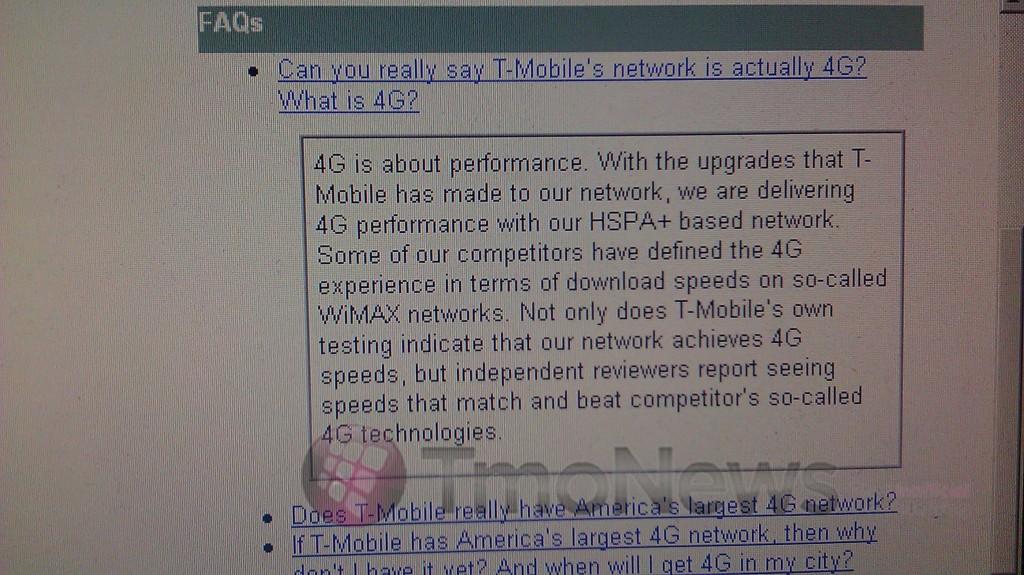Ever since T-Mobile officially announced its HSPA+ network as “America’s largest 4G network”, there has been much argument among the carriers over what exactly “4G” is, and thus the “4G wars” began. Receiving criticism from both Sprint and AT&T, Magenta continues to stand by its 4G claims and rightfully so. According to the ITU, not a single carrier in the U.S. currently meets the global standard for an accepted 4G network (yes, that includes Verizon and AT&T’s upcoming LTE networks along with Sprint’s ‘not as good as they think it is’ WiMAX network). In order to clear up the confusion, Magenta explains what 4G is and why T-Mobile currently has the largest 4G network. T-Mobile’s 4G definititon is as follows:
4G is about performance. With the upgrades that T-Mobile has made to our network, we are delivering 4G performance with our HSPA+ based network. Some of our comptetitors have defined the 4G experience in terms of download speeds on so-called WiMAX netowrks. Not only does T-Mobile’s own testing indicate that our network achieves 4G speeds, but independent reviewers report seeing speeds that match and beat competitors so-called 4G technologies
Magenta also goes on to exactly how it has America’s largest 4G network, claiming that currently T-Mobile’s 4G network offers 4G speeds to more people than any other wireless broadband network in the country, and they’re still expanding. T-Mobile states that its network to date is available in more than 80 major metropolitan areas and are on track to reach their goal of 200 million people before the end of this year. Additionally, T-Mobile plans to keep up with the competition by planning to increase its 4G speeds from 21 Mbps to 42 Mbps beginning next year. Hit the jump for answers to more FAQs. Be sure to leave your thoughts in the comments!

